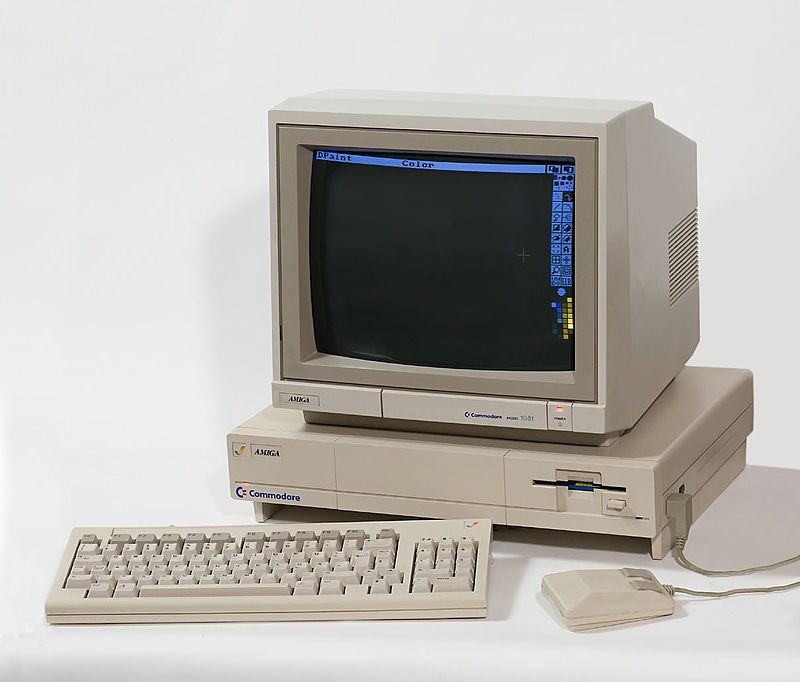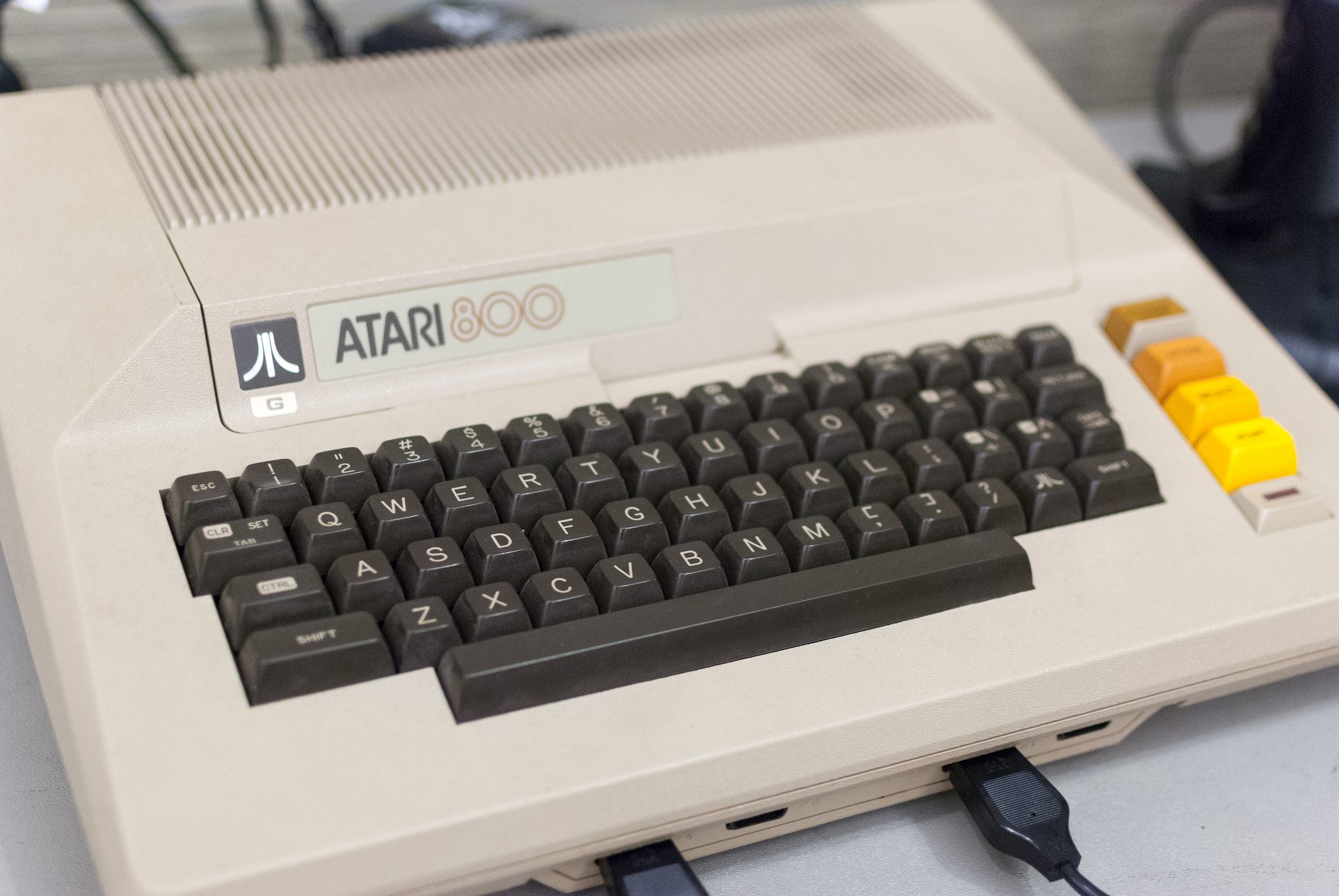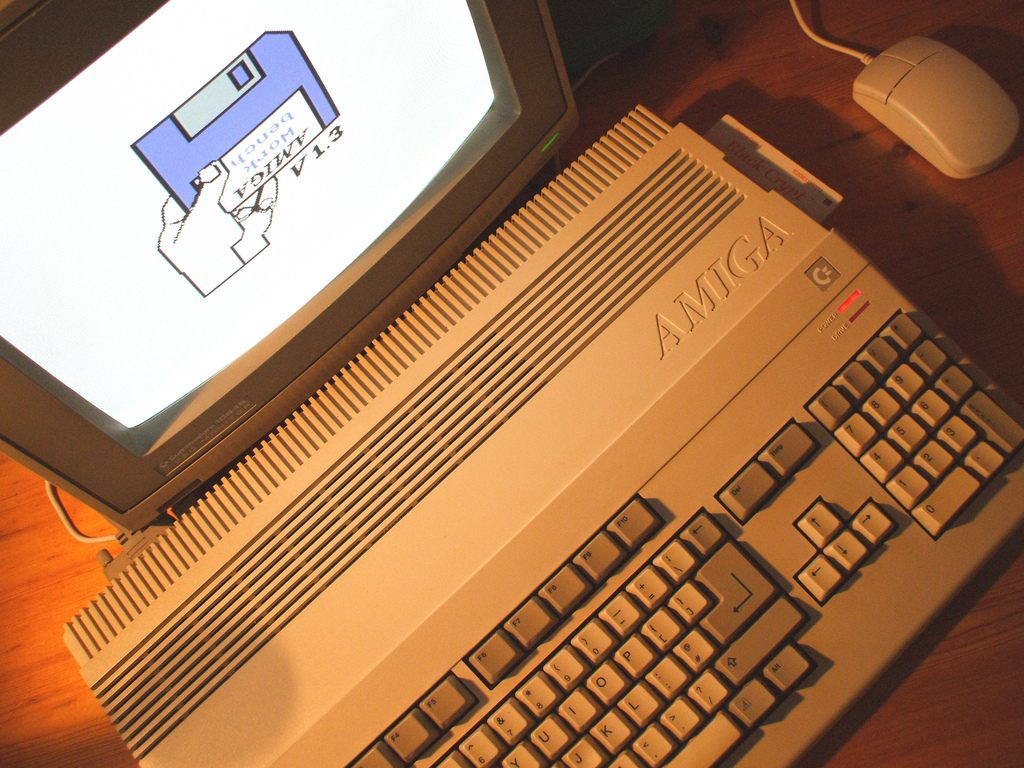How the Commodore Amiga Powered Your Cable System in the ’90s
The life and death of the Prevue channel, which showed you what to watch.

The Amiga Commodore 1000. (Photo: Kaiiv/Pixel8/CC BY-SA 3.0)
A version of this post originally appeared on the Tedium newsletter.
In terms of planning our lives around what our TVs spit out, we’ve come a long way from the overly condensed pages of TV Guide.

In fact, the magazine was already looking awful obsolete in the 1980s and 1990s, when cable systems around the country began dedicating entire channels to listing TV schedules.
The set-top box, the power-sucking block that serves as the liaison between you and your cable company, is a common sight in homes around the country these days.
But before all that was the Commodore Amiga, a device that played a quiet but important role in the cable television revolution.
The Amiga was a much-loved machine, huge among a cult of users who embraced its impressive video and audio capabilities, which blew away every other platform at the time of its release.
As a multimedia powerhouse, it was ahead of both the Apple Macintosh and the IBM PC by nearly a decade at the time of its 1985 release, and its launch price was a relatively inexpensive $1,295, making the computer a bit of a bargain at launch. And seeing as “Amiga” is the Spanish word for friend with a feminine ending, it was also friendlier than its office-drone competitors.
(Ars Technica has a long-running series about the Amiga. When you get a chance, dig in.)
For cable providers, the Amiga’s capabilities for displaying content on a television were a bit of a godsend. Previous offerings, such as the Atari 800, were able to put messages onto a television screen, though not without much in the way of pizzazz.

The Atari 800. (Photo: Matt Chan/CC BY-ND 2.0)
As a result, the Amiga quickly became the cable industry’s computer of choice in the pre-HDTV era, especially after the release of NewTek’s Video Toaster in 1990. Video Toaster, which at first was only compatible with the Amiga, made it possible to do complex video editing at a small fraction of the cost of specialized professional video-editing platforms, and that made it popular with public-access TV stations.
“We showed the Toaster recently at the National Association of Broadcasters show—this is where the engineers go to buy their stuff—and they came by the booth. They said things like, ‘This is unbelievable, this is revolutionary that you can do this in a box for this price,’” Newtek’s Paul Montgomery said in a 1990 interview with the PBS show Computer Chronicles.
Video Toaster was so successful that it upstaged the Amiga platform as a whole, particularly in the United States. While Commodore shut down in 1994, Newtek is still around.
If you subscribed to cable television in the ’90s, you most likely saw Video Toaster in action on the cable dial. But the most notable use of the Amiga in cable television didn’t actually rely on Video Toaster at all.
That was the Prevue Guide, which may not have gotten the attention of the MTV, TBS, or Nickelodeon in those days, but served an important purpose: It was the channel you watched to see what was on those channels.
More than 40 million people had access to the Prevue Guide in 1995, and by telling you what was on the air, it played a utility role nearly as important as your remote control.
The channel, run by the United Video Satellite Group (UVSG), had its roots in the Electronic Program Guide (EPG), an ’80s-era channel programming platform that initially ran on a network of Atari 800 computers. (Here’s what it looked like in 1987.)
Later, it moved to the Amiga, and during its mid-’90s heyday, it represented the largest single way that most people were made aware of the Commodore Amiga in the United States—particularly as many cable providers ran their own local Amigas with channel listings.
Like Newtek and its Video Toaster, UVSG was more successful with the Prevue Channel than Commodore itself was with the Amiga.
When you stumbled upon a Prevue Guide channel, you always knew what you were getting—a constant scroll of the channels so consistent that you could set your clock to it.
In the ’90s, the channel was known for its split-screen setup: The top half of the screen was used for a variety of previews for premium channels, as well as infomercial-style advertising, especially for psychics. The bottom half, meanwhile, was like a spreadsheet of constant data.

The Amiga screen. (Photo: Les Chatfield/CC BY 2.0)
And we can’t talk about this service without mentioning the synth-heavy melodies that would run on this platform at all hours of the day. A YouTube user, PrevueChannelMusic, has gathered many of these Muzak-style tunes for your listening pleasure at any time. Wear headphones.
But ultimately, the technology was fallible, and it, too, is something cable fans remember the Prevue Guide for. The Amiga was known for its unusual error messages, particularly “Guru Meditation,” which was its equivalent of the Blue Screen of Death. Sometimes, the error would appear while the Prevue Guide was playing, which led to some interesting on-screen displays. And since this was TV, everyone in your neighborhood would see these displays.
This kind of thing seems like the kind of thing that’s so mundane and obscure that you’d think nobody would ever talk about it online, but you’d be wrong. In fact, one of the biggest fans of the Prevue Guide is kind of famous.
Ari Weinstein was just five years old on the day the Prevue Channel switched formats to the TV Guide Channel, a point that many fans of the network think the channel lost the plot.
Despite that, the channel played a key role in inspiring his still-budding career as an app developer.
Weinstein is one of the creators of two popular apps, the iOS automation app Workflow and the Mac app DeskConnect. In January, Forbes added him to their 2016 30 Under 30 class. He’s just 21, and in a lot of ways, he’s just getting started.
Like many programmers, he caught the coding bug while he was still in school. Unlike many programmers, he spent a good chunk of his teen years reverse-engineering old Amigas that ran the Prevue Guide in the ’90s. In 2009, he stumbled upon a manual for operating an old Prevue machine, and that led Weinstein down the ultimate rabbit hole.
“I started researching what Prevue was, and it brought back these memories and I just became obsessed with this old TV channel,” Weinstein explained in an interview. “I loved the branding of it, for some reason, and the appearance—a lot of stuff about it felt very ’90s and brought back good memories. But I also became fascinated with how it worked.”
From there, he discovered the history behind the machines—UVSG’s role as a vendor to cable companies around the country, what the company did with those machines after they passed their sell-by date (destroyed them, mostly), and how he could get his hands on a few.
“I actually found some of these units by painstakingly following all mentions of it on the Internet and reaching out to people,” he noted.
Weinstein didn’t just reach out to people, either. He connected them, launching a still-active forum to bring together a surprisingly large community of Prevue Guide enthusiasts, as well as a Wiki to discuss and organize the community’s findings around the platform.
He says that the fairly unusual hobby helped him as he moved from working on really old platforms as a teen to really new ones as an adult.
Before becoming a Prevue Guide enthusiast, Weinstein built a name for himself in the iOS jailbreaking scene by creating iJailbreak. Between his time reverse-engineering iPhones and reverse-engineering old Amigas owned by cable companies, he’s become very adept at using such techniques to figure out the ins and outs of the Mac and iOS operating systems, which DeskConnect and Workflow bend in interesting ways.
“I actually learned a lot on the technical side from reverse engineering the Prevue software, which has helped me a lot in other stuff I’ve worked on since,” Weinstein explained.

A screengrab of Ari Weinstein’s Prevue Guide Wiki. (Photo; Screengrab)
These days, Weinstein and other enthusiasts are doing more to keep the memory of the Prevue Guide alive than the companies that currently own the channel, CBS and Lions Gate Entertainment.
Like much of the cable industry, the channel has gone through a variety of shifts over the years. The biggest one came in 1999, when United Video Satellite Group paid to purchase TV Guide from News Corp.
The purchase, which came three years after a failed partnership between the two parties, helped spell a key turning point for the Prevue brand and its underlying technology, which helped drive listings and pay-per-view systems around the country.
Within months, the Prevue Channel was rebranded to the TV Guide Channel, and soon after the merger, the company moved away from the Amiga platform for good, switching to Windows and an arguably-uglier format.
It wasn’t long before cable boxes made the listings obsolete, and by 2008, ownership of the channel and magazine were separated once again, with the company Rovi currently in possession of the patents and technology that drove the scrolling TV listings.
By 2014, the TV Guide Channel changed its name to Pop, reflecting a final move away from listings.

A Commodore Amiga 500. (Photo: Quagmire’s Photos/CC BY-ND 2.0)
Part of the reason the Prevue Guide faded from view was due to the significant changes in the cable landscape. If you go back in time 20 years and compare the channels on the air then with now, you’ll see very few similarities. Two decades ago, AMC stood for “American Movie Classics” and was closely associated with early Hollywood films, rather than zombies. In 1996, WGN and TBS were still local television networks that just happened to distribute their signals nationally.
Back then, the cable industry was still young enough where it could rely on industry-specific technology, rather than trying to make it work with consumer-standard gear.
Using obsolete technology is far from something that is specific to television, of course. Just ask the ATM industry, which used IBM’s OS/2 operating system for nearly two decades after its commercial demise.
A version of this post originally appeared on the Tedium newsletter.









Follow us on Twitter to get the latest on the world's hidden wonders.
Like us on Facebook to get the latest on the world's hidden wonders.
Follow us on Twitter Like us on Facebook